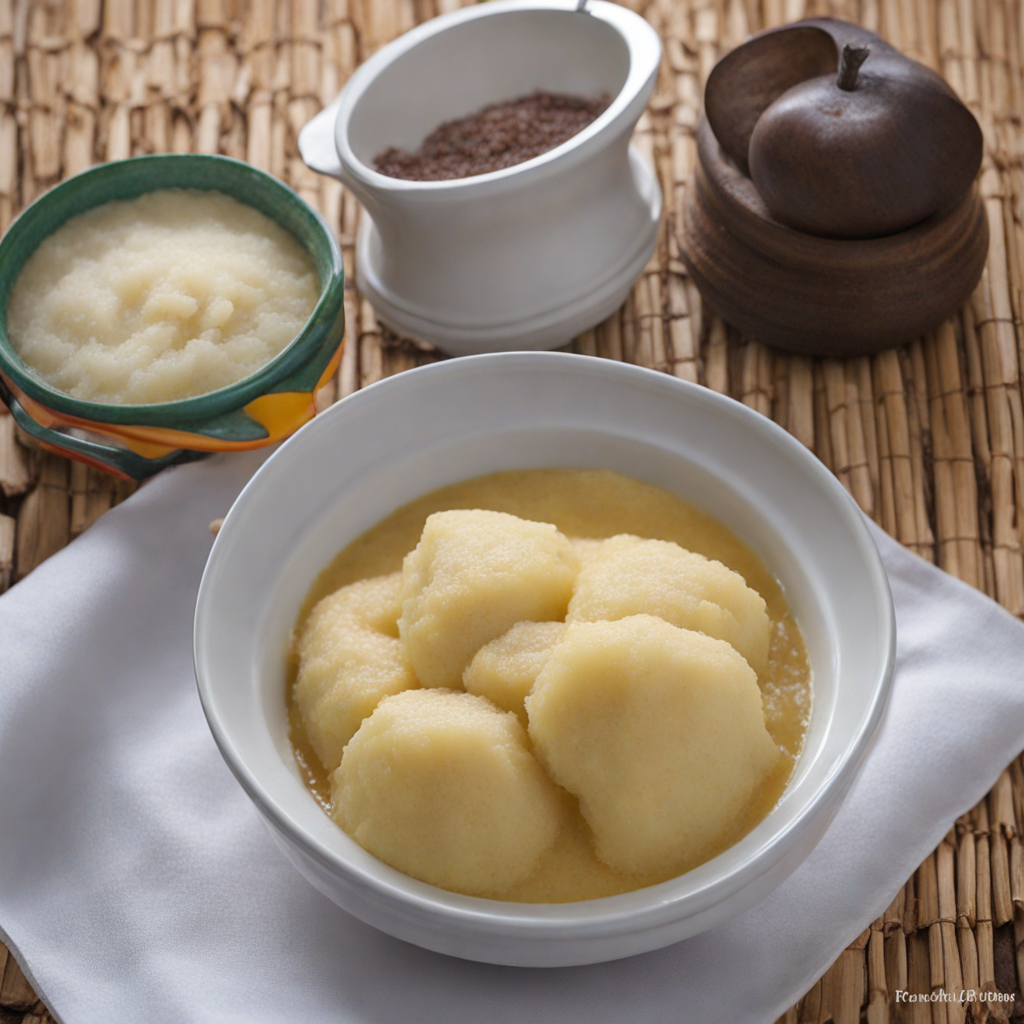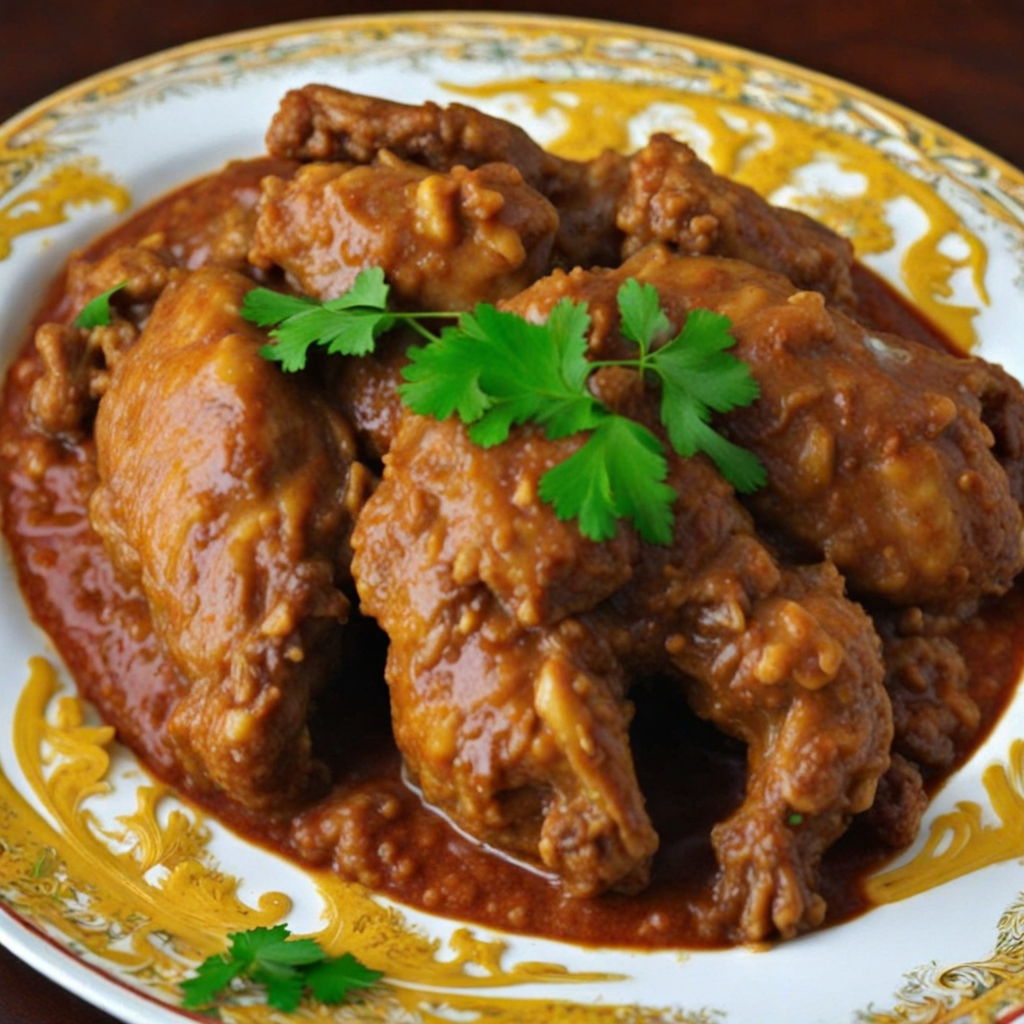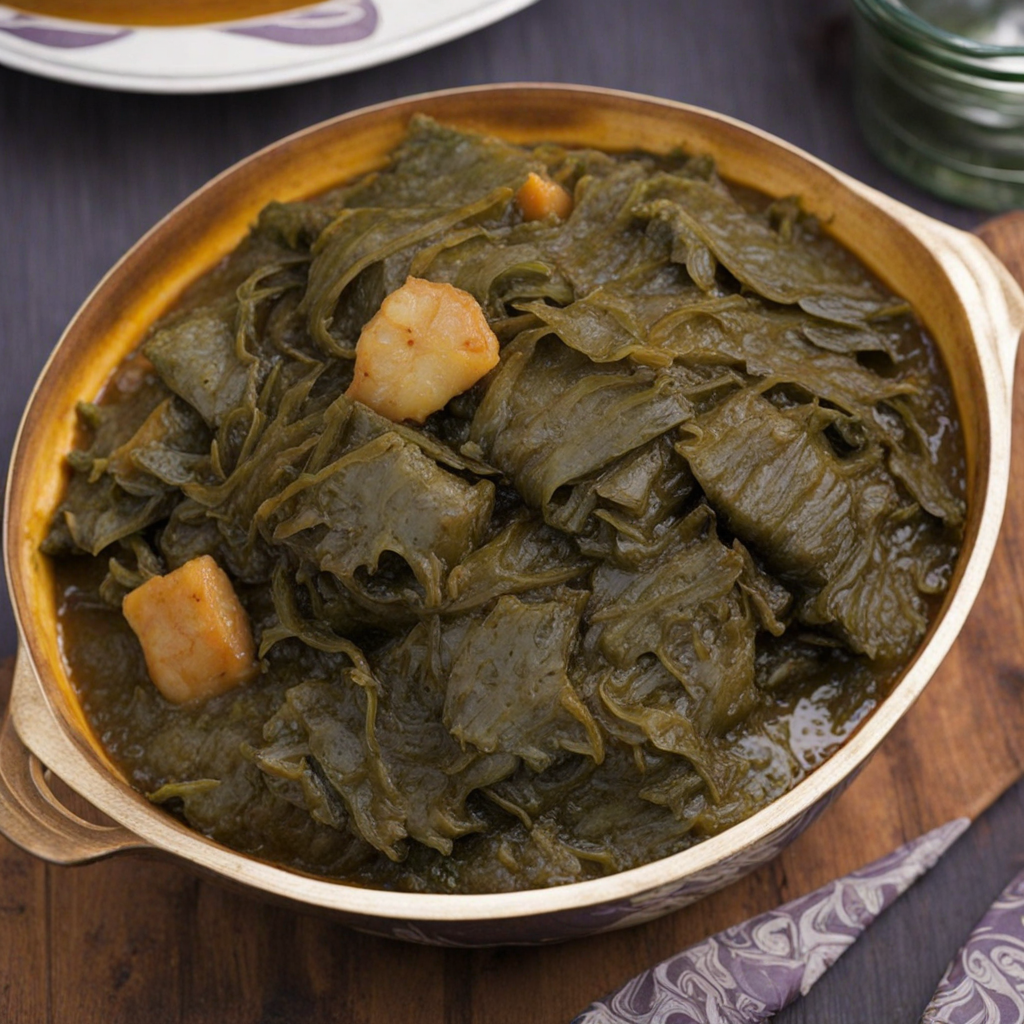Fufu
Fufu is a traditional staple food originating from Central and West Africa, with its roots deeply embedded in the culinary culture of the Congo. This dish is crafted from starchy ingredients, most commonly cassava, yams, or plantains, which are boiled until soft and then pounded into a smooth, elastic texture. The result is a dough-like consistency that is both comforting and versatile, making it an ideal accompaniment to various soups and stews. Fufu is often enjoyed as a communal dish, where diners tear off pieces and use their hands to scoop up flavorful sauces, enhancing the overall dining experience with a tactile and engaging element. The flavor of Fufu itself is subtle and mild, allowing it to serve as a blank canvas for the bold and vibrant tastes of Congolese dishes. It absorbs the flavors of the accompanying sauces, which may include spicy tomato-based stews, rich peanut sauces, or hearty vegetable concoctions. This adaptability lends Fufu a unique quality, as it can complement a wide range of ingredients, from tender meats to fresh greens, creating a satisfying balance on the palate. In many households, Fufu is a cherished dish, often prepared with care and shared among family and friends during gatherings. Fufu is not just a meal; it embodies the spirit of community and tradition in Congolese culture. The process of making Fufu, particularly the vigorous pounding required to achieve its signature texture, is often a social activity, bringing families together. As you explore Fufu, you will discover not only its delightful taste but also the rich history and cultural significance it holds in the Congo. Each bite is a journey through the vibrant landscapes of African cuisine, inviting you to savor the essence of a dish that has nourished generations.
How It Became This Dish
Fufu: A Culinary Legacy of Congo Fufu, a staple food found across various regions of Africa, particularly in the Congo, serves as a poignant symbol of culture, tradition, and community. This starchy dish, often made from cassava, yams, or plantains, is not merely a sustenance source; it is intertwined with the social and cultural fabric of Congolese life. Origins of Fufu The origins of fufu can be traced back to the early agricultural practices of the African continent, particularly in the regions where yams and cassava were first cultivated. While the exact timeline is difficult to pinpoint, evidence suggests that these root vegetables were domesticated thousands of years ago, with cassava emerging as a staple due to its resilience and high yield in diverse climates. The name "fufu" itself is believed to derive from the Akan language of the Ashanti people in Ghana but has evolved to encompass various forms and preparations across the continent. In the Congo region, fufu has its roots in the traditional diet of the Bantu-speaking peoples. As they migrated across central Africa, they brought with them agricultural knowledge and practices, which included the cultivation of cassava and yams. The versatility of these crops allowed for the development of fufu, which could be easily prepared and consumed with a variety of soups, stews, and sauces. Cultural Significance Fufu holds immense cultural significance in Congolese society. It is more than just food; it represents a communal way of life. Traditionally, fufu is made by boiling starchy vegetables, then pounding them into a smooth, stretchy consistency. This labor-intensive process often involves the entire family, fostering a sense of togetherness and cooperation. The act of preparing fufu is not just a culinary task; it is a ritual that strengthens familial bonds and cultural identity. Moreover, fufu is often served during significant life events such as weddings, funerals, and festivals, acting as a unifying dish that brings people together. In many Congolese communities, sharing a meal of fufu is an expression of hospitality and friendship, highlighting its role in social interactions. It serves as a reminder of the importance of community and the shared experiences that bind people together. In addition to its social implications, fufu also embodies the concept of sustenance and survival. The Congolese people have relied on fufu as a primary source of carbohydrates, providing energy to sustain them through their daily labor. Its affordability and availability make it a crucial food source, especially in rural areas where access to diverse ingredients may be limited. Development Over Time Over the centuries, the preparation and consumption of fufu have evolved, reflecting broader changes in Congolese society. During the colonial period, the introduction of new crops and cooking methods began to influence traditional practices. The arrival of European powers in Africa brought not only new agricultural products but also new cooking technologies, such as metal pots and stoves, which allowed for more efficient preparation of fufu. Despite these changes, the fundamental essence of fufu has remained intact. Modern Congolese households may prepare fufu using more accessible methods, such as using pre-packaged cassava flour or instant fufu mixes, a significant shift from the traditional labor-intensive process. This adaptation highlights the resilience of culinary traditions, as they evolve to meet the needs and realities of contemporary life while still honoring their roots. In recent years, there has been a resurgence of interest in traditional foods, with many Congolese people seeking to reconnect with their culinary heritage. This movement has led to a renewed appreciation for the cultural significance of fufu and other traditional dishes. Food festivals and cultural events often feature fufu as a centerpiece, showcasing its importance in Congolese identity and cuisine. Regional Variations Fufu is not exclusive to the Congo; it has variations throughout Africa, each with its unique preparation methods and accompaniments. In Ghana, for example, fufu is typically made from a combination of cassava and plantains, pounded together until smooth. In Nigeria, it may be made from yams or semovita, often served with rich, spicy soups. These regional differences highlight the adaptability of fufu, showcasing how local ingredients and culinary practices shape its preparation. In the Congo, fufu is traditionally served with a variety of sauces, made from ingredients such as groundnuts (peanuts), okra, or leafy greens. These accompaniments enhance the flavor and nutritional value of the dish, turning it into a complete meal. The specific type of sauce served with fufu can vary by region, reflecting local tastes and culinary practices. Global Influence and Recognition As the African diaspora has spread across the globe, so too has the influence of fufu. In cities with significant African communities, such as Paris, London, and New York, fufu has found its way onto the menus of restaurants, showcasing the richness of Congolese and African cuisine to a broader audience. The popularity of fufu and its variations has led to an increased awareness of African culinary traditions, contributing to a greater appreciation for the continent's diverse food culture. Social media has played a significant role in this global recognition, with food bloggers and influencers sharing recipes and cooking demonstrations that highlight traditional fufu preparation. This digital platform has allowed for the exchange of culinary knowledge, connecting people across cultures and generations. Conclusion Fufu stands as a testament to the resilience and adaptability of Congolese culture. From its origins in ancient agricultural practices to its role in contemporary society, fufu embodies the spirit of community, tradition, and identity. It serves not only as a source of sustenance but also as a symbol of the shared experiences that connect individuals and families. As the world continues to evolve, so too will the legacy of fufu, ensuring that this beloved dish remains an integral part of Congolese culture for generations to come.
You may like
Discover local flavors from Congo







